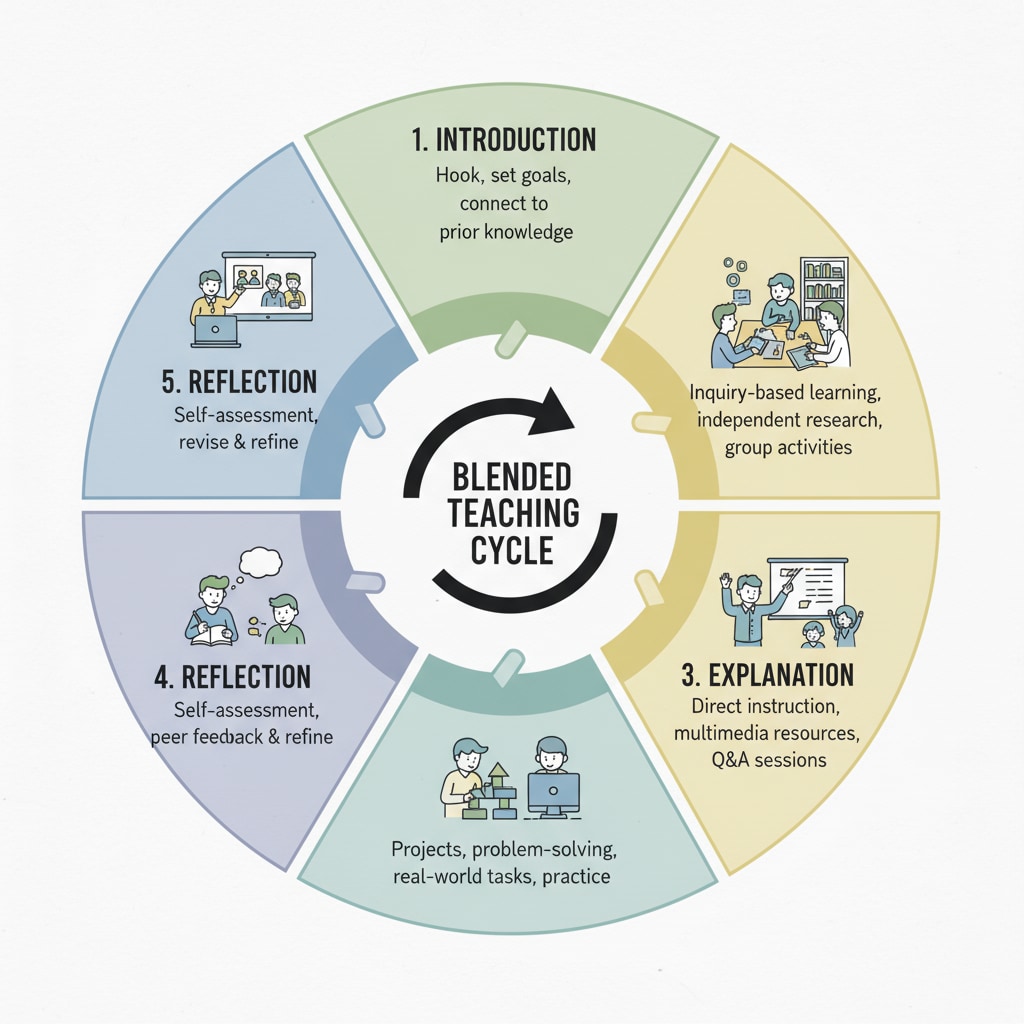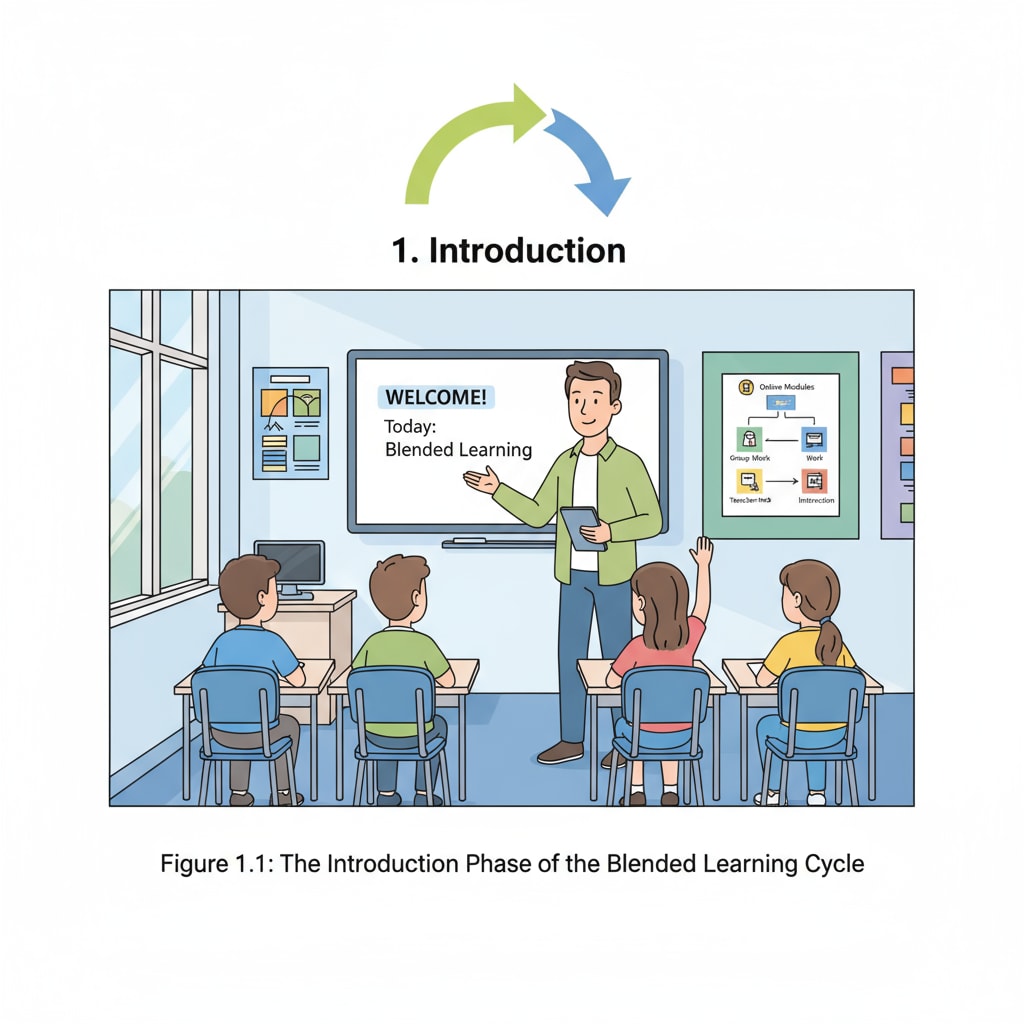The Blended Teaching Cycle Theory, an innovative educational model, effectively combines traditional transmission teaching and modern facilitation learning methods. This theory has significant implications for K12 education, aiming to balance the delivery of knowledge and students’ active exploration.

In this article, we will delve into its five-step cycle process, theoretical basis, implementation advantages, and limitations.
The Five-Step Cycle Process
The Blended Teaching Cycle Theory consists of five crucial steps. First is the “Introduction” phase, where teachers present new concepts or topics, laying the foundation for learning. This is a traditional transmission-based step, providing students with essential knowledge. For example, in a science class, the teacher might introduce the concept of gravity. Teaching methods on Wikipedia

Next is the “Exploration” step. Here, students are encouraged to explore the topic independently or in groups. This is a facilitation learning aspect, allowing students to discover knowledge on their own. They might conduct experiments or research related to the introduced topic.
Then comes the “Explanation” phase. Teachers clarify any misunderstandings and provide in-depth explanations. This combines both transmission and facilitation, as teachers build on students’ exploration experiences.
The “Application” step follows, where students apply the learned knowledge to real-world situations. This practical application enhances their understanding and skills.
Finally, the “Reflection” step concludes the cycle. Students and teachers reflect on the learning process, identifying areas for improvement.
Theoretical Basis
The Blended Teaching Cycle Theory is grounded in multiple educational theories. Cognitive constructivism, for instance, emphasizes that learners construct knowledge based on their prior experiences. In this theory, the exploration and reflection steps align with this idea, as students build new knowledge from their own discoveries. Educational psychology on Britannica
Behaviorism also plays a role. The introduction and explanation steps can be seen as providing the necessary stimuli and responses to reinforce learning. By presenting clear information and clarifying concepts, students are more likely to retain the knowledge.
Implementation Advantages
One significant advantage of this theory is that it caters to different learning styles. Visual learners can benefit from the visual aids in the introduction, while kinesthetic learners can engage in hands-on exploration. In addition, it promotes active learning. Students are not just passive recipients of knowledge but are actively involved in the learning process.
Moreover, it enhances students’ critical thinking skills. Through exploration and application, students learn to analyze problems and find solutions independently. This prepares them for real-life challenges.
Limitations
However, implementing the Blended Teaching Cycle Theory also has some limitations. It requires significant teacher training. Teachers need to be proficient in both transmission and facilitation teaching methods, which can be time-consuming and resource-intensive.
Another limitation is the potential for unequal participation. In group exploration, some students may dominate, while others may be left behind. Teachers need to ensure that every student is actively involved.
In conclusion, the Blended Teaching Cycle Theory offers a valuable framework for K12 education. By integrating transmission and facilitation learning, it provides a balanced approach to education. While it has limitations, with proper implementation and teacher training, it can greatly enhance the learning experience. Readability guidance: The article uses short paragraphs to summarize key points. Each section provides a clear understanding of the Blended Teaching Cycle Theory, its process, basis, advantages, and limitations. Transition words like “first,” “next,” “then,” etc., are used to enhance readability.


